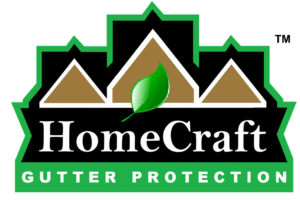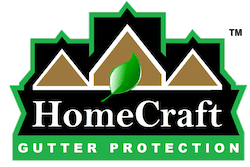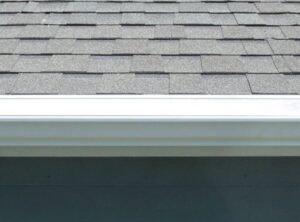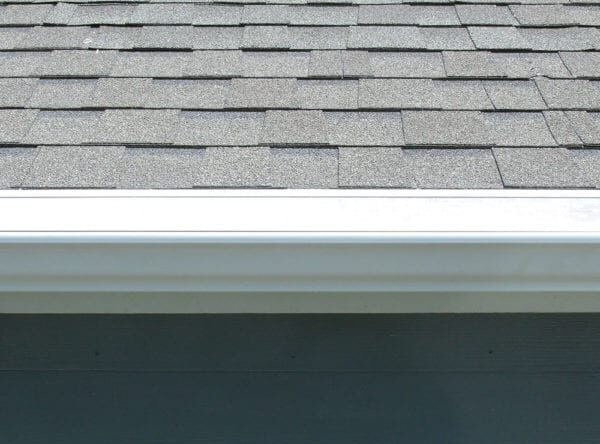Gutters play an important role in preserving your home’s foundation. They collect rainwater as it flows off your roof and direct it away from your home, preventing erosion. Well-functioning, clog-free gutters can also prevent water damage to your siding, roof, and yard.
Each of the many types of gutters has its own pros and cons to consider, and you will need to decide between DIY or professional installation. To help you choose the best gutters for your home, the This Old House Reviews Team has compiled this guide. Below, we cover why gutters are necessary, how they work, how much they cost, and more.
What To Consider When Choosing Gutters
There are several factors to consider when deciding which gutters are best for your home. Price, aesthetics, durability, performance, installation options, and maintenance requirements vary from one type of gutter to another.
Start by evaluating your existing gutters. Do you like the way they look? How well have they held up? Identifying issues with your current system can help you shop for a replacement that suits your needs better. You might consider a different style or brand if something has consistently gone wrong. For instance, you might decide to upgrade from sectional to seamless gutters or from aluminum to stainless steel.
As you research the various materials and designs, decide which features are most important to you.
- Do you have a tight budget, or are you willing to spend more for gutters that will look better or last longer?
- Do you plan to install the gutters yourself, or will you hire a professional?
- How much water and debris will your gutters need to handle?
- How much work do you want to put into maintaining them?
Your answer to these questions will help you narrow down your options.
Types of Gutters
When choosing gutters, you have three aspects to consider: the shape or style, the material, and whether the gutters are seamless or sectional. If you add up every possible combination of features, you will have a list with dozens of types of gutters.
This list focuses on the different materials available. Note that when you purchase gutters, you will also have several styles to choose from. The most popular options are half-round, K-style, and box-style gutters. You will also have to decide between seamless or sectional gutters.
Aluminum Gutters
Aluminum may be the most popular material choice for gutters. It is lightweight, rust-resistant, and weatherproof. Aluminum is also easy to paint, which is important if you are worried about matching your gutters to the color of your siding.
Generally, the more expensive the material, the more durable the gutters—and aluminum is on the lower end of the price spectrum. Although aluminum is relatively strong, it is more prone to denting and bending than other metals.
Steel Gutters
There are two types of steel gutters: galvanized and stainless. Galvanized steel gutters feature a thin outer layer of zinc to prevent rusting, and stainless steel features a mixture of steel and rust-resistant chromium. Steel gutters are more durable than aluminum gutters but also much heavier.
Galvanized steel is the lighter and less expensive of the two. However, it is also less durable, particularly when exposed to saltwater. Stainless steel offers superior weatherproofing but costs more. Both types of steel are heavy and require welding, which makes them unsuitable for DIY installation.
Copper or Zinc Gutters
Copper gutters are completely rustproof and can stand up to all weather conditions. Further, many people like copper’s aesthetic, particularly on historic homes. Copper gutters can last for generations if properly installed and maintained, and their price reflects that fact. However, copper develops a greenish patina over time as the metal oxidizes.
Zinc offers similar benefits to copper but becomes more attractive as oxidation sets in. Zinc gutters are also less expensive. Both types of gutters require welding to install.
Vinyl Gutters
Vinyl gutters are lightweight, inexpensive, and designed for easy installation, making them a great choice for DIYers. They come in a variety of colors to match vinyl siding. If you cannot find an exact match, you can also paint vinyl gutters.
The biggest downside to vinyl gutters is their durability. Vinyl is waterproof and will not corrode or rust, even in salty air. However, it can become brittle and crack over time, especially if exposed to extreme temperatures. As a result, vinyl gutters work best in mild climates.
Are Gutters Necessary?
Although gutters are not the most exciting feature of your home, they are typically necessary. Functioning gutters help prevent damage to your home and yard, including the following:
- Soil erosion around the foundation
- Shifts and cracks in the foundation
- Basement leaks or flooding
- Roof leaks and water damage
- Ditches and trenches through your yard
- Flooded garden beds
- Pools of standing water
- Ice dams along the edge of the roof
- Mold and mildew growth
- Stains or rot on the siding
Gutters are particularly important if your home sits at the bottom of a slope, has a short roof overhang, or is surrounded by clay-rich soil. Any of these conditions will cause water to naturally drain toward your home’s foundation rather than away from it.
Not only are gutters necessary, but so is gutter maintenance. Many of the issues listed above can be caused or made worse by clogged gutters.
How Do Gutters Work?
Gutters line the lower edges of your roof to collect rainwater. As rain falls, gravity ensures that it flows down your roof and into the gutters. From there, it will drain into a downspout that empties at a safe distance away from your home’s foundation.
A gutter system has six main parts:
- Gutters: These are the long, horizontal pieces that follow the roofline. Rainwater and debris flow off the roof and into the gutters.
- Downspouts: These are the vertical pieces of the gutter system that run from the gutters to the ground. Rainwater drains from the gutters into the downspouts.
- Elbows: These are the L-shaped pieces that are part of the downspout. Each downspout has at least one, often at the bottom. Water flows through the downspout and elbows to the ground.
- End caps: These are the flat pieces that cap the gutters at each end. They form barriers that keep rainwater from exiting on either end rather than through a downspout.
- Hangers and brackets: These are the pieces that support the gutter system. They may attach to the fascia or siding of the home, depending on whether they are securing a gutter or downspout.
- Splash blocks: These are the optional pieces located on the ground beneath a downspout. As rainwater empties from the downspout, the splash block helps direct it away from the house. They are often made of concrete.
In addition to the parts listed above, you may choose to add gutter guards to your system to keep most debris from entering your gutters. Downspout extensions can replace splash blocks, or you might funnel the water into a rain barrel, a French drain, or another underground drainage or irrigation system.
How Much Do Gutters Cost?
Several factors affect gutter installation costs, starting with your chosen gutter material. Consider the average costs for 200 linear feet of sectional or seamless 5-inch K-style gutters on a one-story home, based on our research:
- Vinyl: $600–$1,200
- Aluminum: $1,000–$3,000
- Steel: $1,200–$4,800
- Copper: $3,600–$6,000
Costs will vary depending on the size and style of gutters and any upgrades or extras you select. Seamless gutters cost more than sectional gutters, and you may want to consider adding gutter guards to either. Your final total will also include labor and additional pieces, such as end caps and downspouts. Gutter weight, home layout, and roof pitch can all impact labor costs.
You should also be aware of gutter repair costs. As you compare different options, consider both the cost and frequency of repairs. For instance, sectional gutters generally require more frequent but less expensive repairs than seamless gutters. Similarly, although higher-end metal gutters are less likely to bend or break, any repairs they do require will cost more than those for lightweight aluminum or vinyl gutters.
DIY vs. Professional Installation
It is possible to install rain gutters yourself. The best gutters for DIY installation are aluminum or vinyl sections. Experienced DIYers should be able to handle gutter installation as long as they have all the necessary tools and equipment, plus ample time to devote to the project.
Some types of gutters, however, can only be installed by professionals, including copper and steel gutters and seamless gutters made from any material. Professionally installed gutters also typically come with a manufacturer’s warranty and workmanship guarantee.
What Are Gutter Guards?
Gutter guards help prevent leaves and other debris from entering your gutters. Many homeowners invest in gutter guards to extend the life span of their gutters, prevent clogs, and minimize maintenance.
You can choose from five types of gutters guards:
- Brush
- Foam
- Screen
- Micro-mesh
- Reverse-curve
The best gutter guards block debris without obstructing water flow into your gutters, even during heavy rainfall.
Our Conclusion
Choosing the best gutters for your home comes down to your budget and preferences. Copper and zinc gutters last the longest, especially if you can afford a seamless version. They also look attractive. However, aluminum and vinyl may be better choices for cost-conscious homeowners. These lightweight options are suitable for DIY installation and can be easily painted to match the color of your home.
Before making a decision, consider the price, effectiveness, and aesthetics. Remember that your local climate and weather conditions, such as salty air or heavy rainfall, can affect certain gutters’ life spans.
FAQ About Choosing the Best Gutters
Our Rating Methodology
The This Old House Reviews Team backs up our gutter guard recommendations with a detailed rating methodology to objectively score each gutter guard product and provider. We conduct research by reviewing product specifications and provider website information, speaking with customer representatives, and analyzing customer reviews. We then score each provider against our review standards for specifications, services, reputation, warranties and discounts, payment options, and customer service to arrive at a final score out of 100.
To share feedback or ask a question about this article, send a note to our Reviews Team at reviews@thisoldhousereviews.com.
















